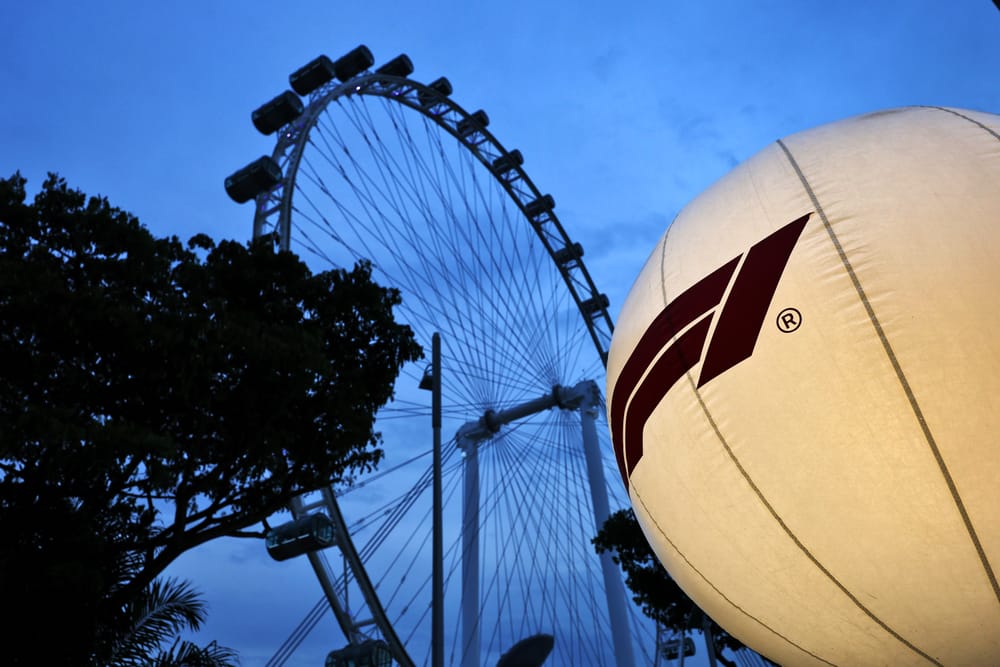The first day of Formula 1's Singapore Grand Prix featured a shock McLaren driver split, more developments in Christian Horner's potential return and plenty more.
Here's what we learned from Thursday in Singapore:
Drivers ‘jealous’ of Verstappen antics
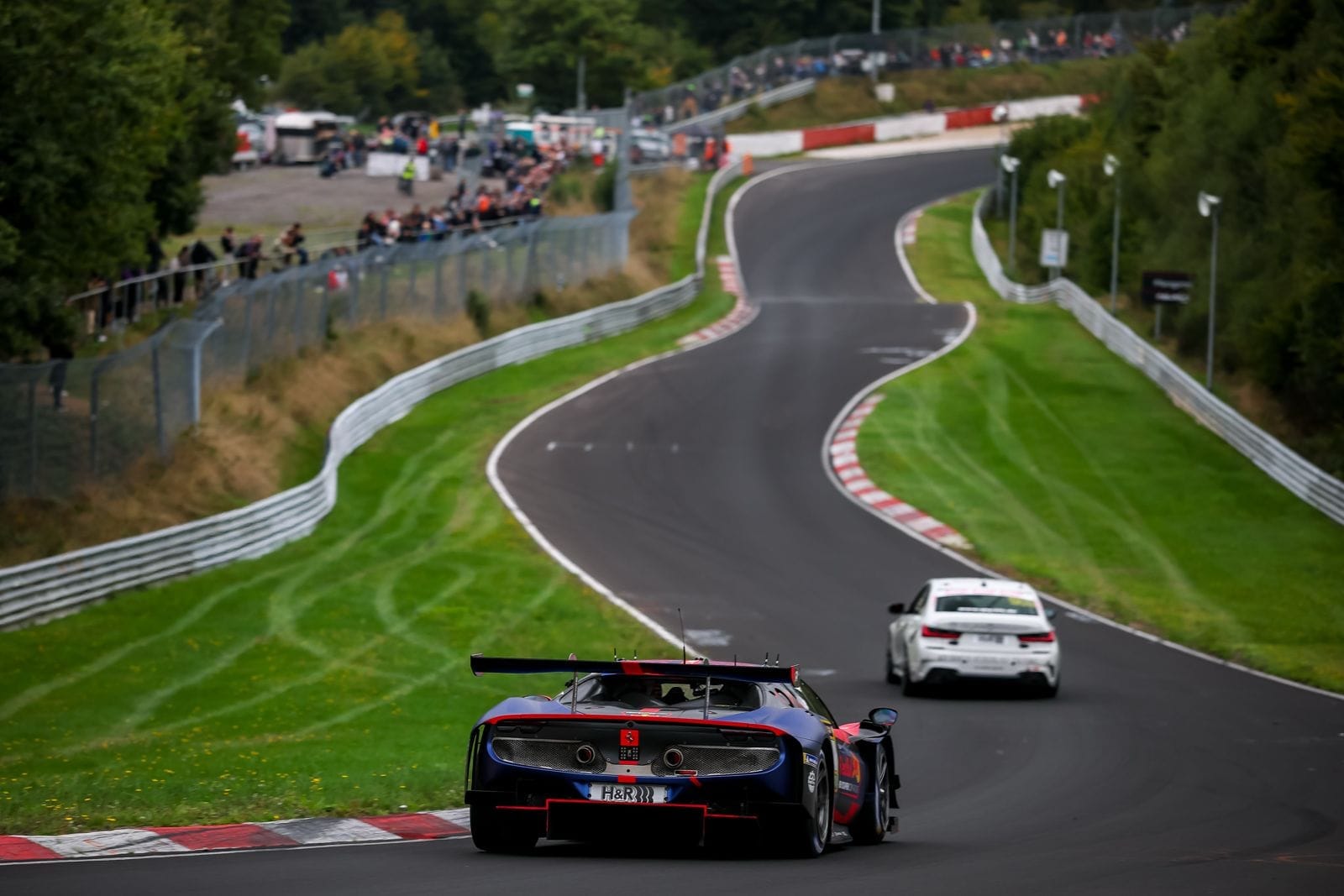
George Russell said “we’re all pretty jealous” of Max Verstappen getting to race on the Nordschleife between F1 grands prix - although Verstappen’s extracurricular exploits seem to be over for the rest of this season.
Verstappen won on his first proper Nurburgring outing at the famous track’s latest NLS round, which took place on a free weekend for Verstappen after the Azerbaijan Grand Prix.
Russell said having the “freedom of firstly doing what you love in Formula 1, but then also being able to go out and race other things and just enjoy it at your leisure” is not straightforward for other drivers.
“But you have that right when you win four world championships, and we're all here fighting to win our first,” he said.
“Maybe after four championships under our belts, we'll be able to choose to do the same. But respect it a lot, and definitely I would love to do it one day."
Russell wasn’t the only driver to share that view. Esteban Ocon said "If I was in his position, I would probably do the same, definitely. But yeah, it is not the case."
Verstappen’s GT3 debut came ahead of a likely assault on the Nurburgring 24 Hours, although the timing of that is unclear with Verstappen unsure if it would work in 2026 given the change in F1 rules and uncertainty over which car his eponymous GT team will commit to.
And he claims he will not race at the Nurburgring again this year, too, even though there is another NLS round that doesn’t clash with F1.
Piastri’s painful lessons
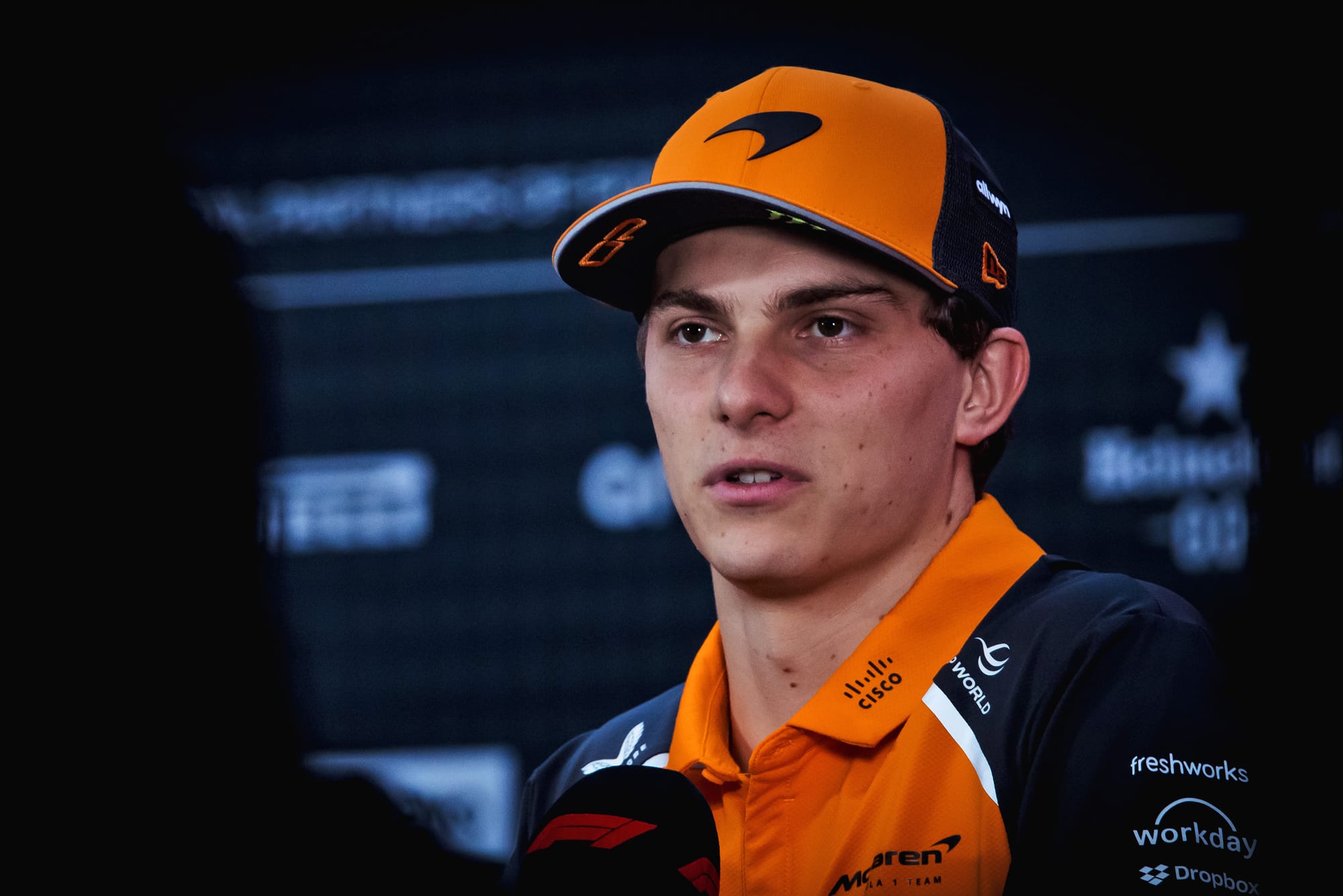
Oscar Piastri had to face one final barrage of questions about his awful Baku weekend before finally putting it behind him by getting on track in Singapore.
The championship leader’s shocking Azerbaijan round - which featured a qualifying crash, a jumped start, and then a lap-one shunt - was unsurprisingly the focus of his media session on Thursday in Singapore, where Piastri did his best to insist he’s ready to move on (once people let him!).
To do that, Piastri has learned some painful lessons. He knows he “can’t afford” weekends like Baku, and pinpointed judging how much risk to take on a street track and how to better cope with an early setback as where he can specifically improve.
The first of those is immediately applicable to Singapore, the second is something Piastri will hope not to have to worry about. He knows his lap-one crash in Baku was directly linked to jumping the start as he fell to the back and was too impatient trying to recover.
“I'm just putting it down to some mistakes,” he said. “Obviously it looks quite dramatic because they're all on the same weekend, but nothing more than that, really.”
Horner’s options become clearer
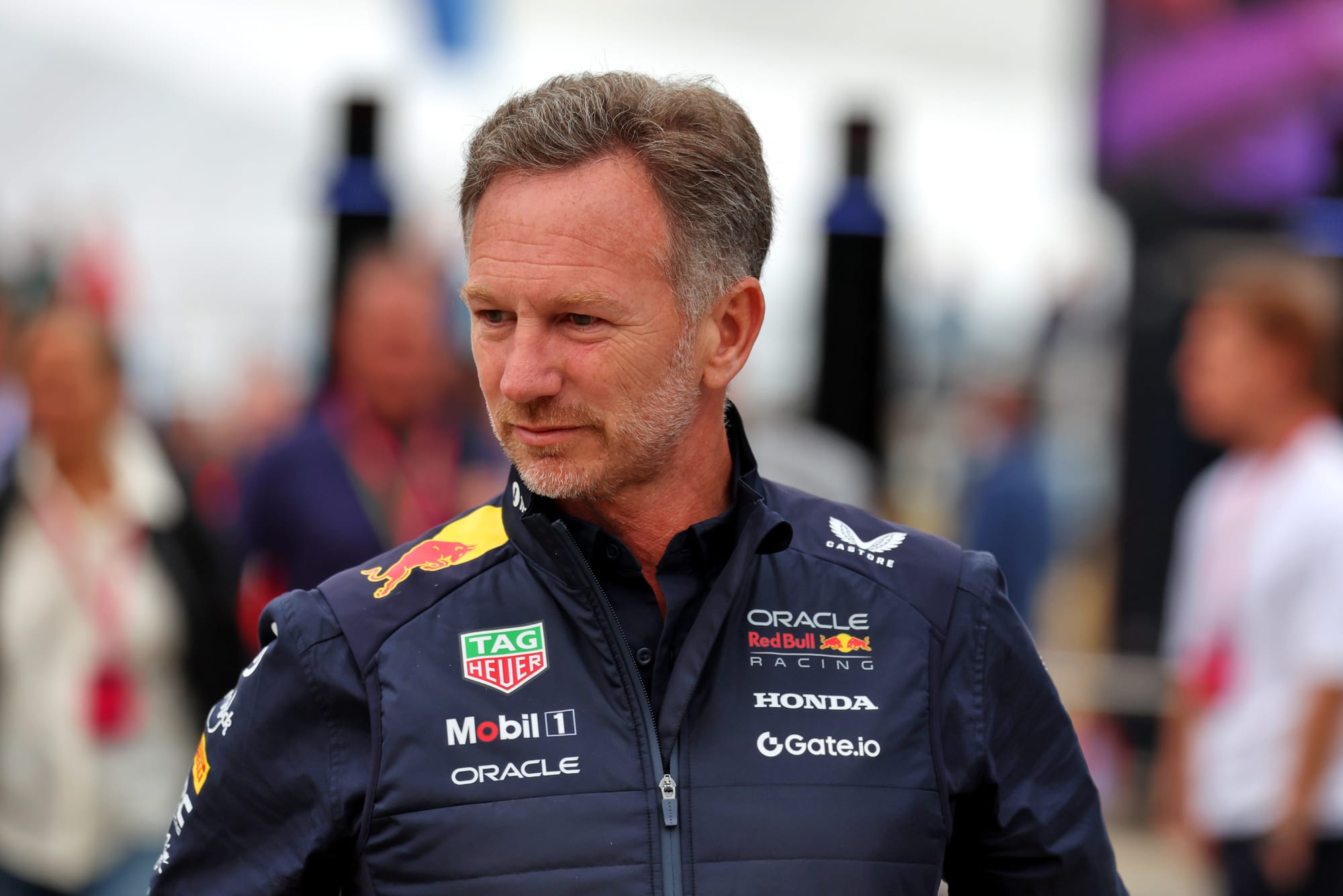
There’s been plenty of speculation on where Christian Horner might end up once the terms of his Red Bull severance allow him to return to the F1 paddock in 2026.
And it would seem there are currently three potential avenues open to him:
1. Some kind of buy-in to whatever Flavio Briatore is doing with Alpine.
2. Join Aston Martin’s Honda-powered superteam by becoming an investor.
3. Create a 12th F1 team from scratch, in his own image.
As revealed by The Race on the eve of the Singapore Grand Prix, option three isn’t quite as fantastical as it might appear on the surface - but it wouldn’t happen before 2028 and would require Horner to find other investors, a manufacturer partner and basically jump through all the same hoops Andretti struggled with before F1 gave Cadillac its seal of approval.
Briatore has already refused to rule out linking up with Horner once he becomes available, and Aston Martin team boss Andy Cowell had to carefully tread a similar line on Thursday in Singapore when asked repeatedly about the prospect of Horner joining his fold.
One team that definitely won’t be linking up with Horner is Haas. Team boss Ayao Komatsu confirmed there had been an approach, but from Horner to the team rather than the other way around.
“It’s true that he approached us and one of our guys had an exploratory, let's say, talk,” Komatsu said. “But that was it. Nothing's going any further.”
Tsunoda’s cryptic car change
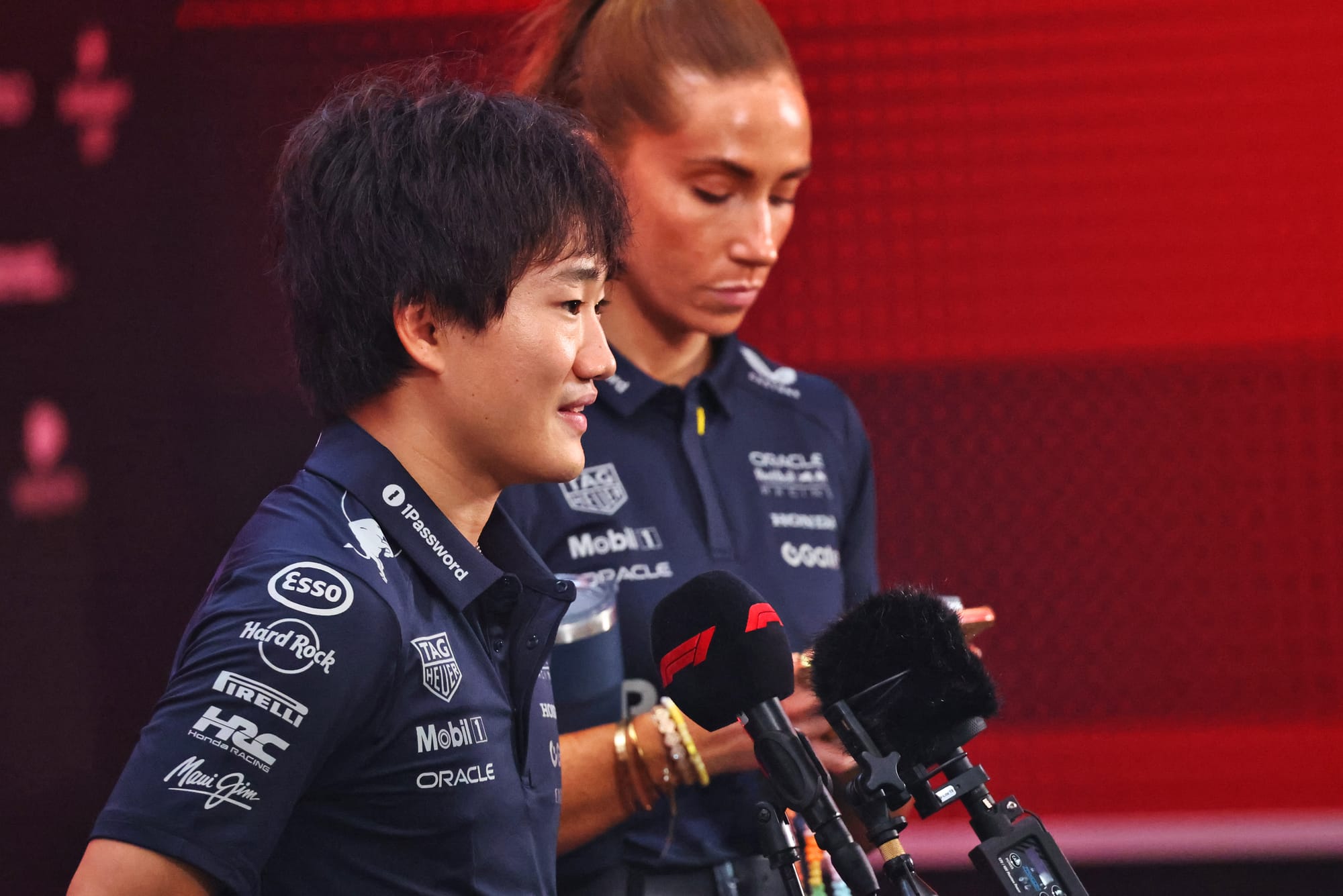
Yuki Tsunoda has hinted his bid to keep his Red Bull seat has been helped by a key car change - which he won’t reveal.
Tsunoda had a decent race in Azerbaijan, although his one-lap pace relative to Max Verstappen was still poor in qualifying and when he finished sixth he was half a minute adrift of his race winning team-mate.
Still, Tsunoda and Red Bull were encouraged that his feeling in the car all weekend was a lot better and critically his race pace was consistent. There was no repeat of Tsunoda complaining of melting his tyres.
This weekend will be a bigger test of that given Singapore puts a lot of stress on the rear axle. But Tsunoda feels there has been an underlying car improvement that will help him.
Tsunoda said without certain changes “I wouldn't be able to secure the P6” and he will “keep that also for the next races”. Is that set-up, spec or something like a chassis change? That’s proving hard to determine.
“The thing we changed into Baku was quite big,” said Tsunoda. “It's quite big, something I wanted to change since quite a long time.
“I got support with that and I think the team finally maybe have a bit more time to change those things.”
Tsunoda reckons his own driving style improvements have combined well with his mystery change - whatever that turns out to be.
Sainz a new man after podium
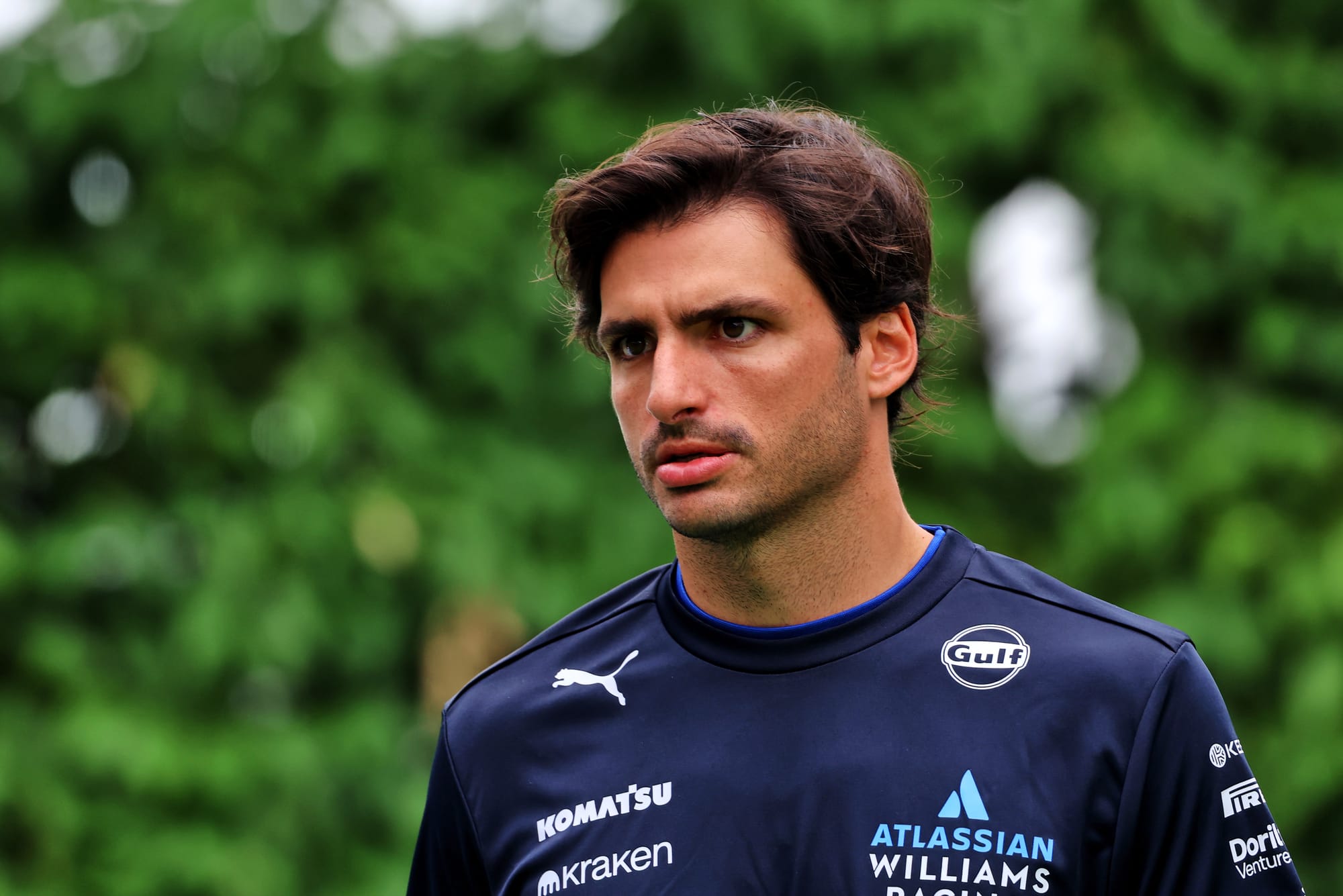
Carlos Sainz’s first Williams podium at the previous race in Baku has clearly lifted him after “two big punches in the stomach”.
Sainz has worn his frustration and exasperation very plainly on his face and in his body language this season. While his performance has been getting better relative to team-mate Alex Albon, various setbacks meant Sainz’s season looked awful on paper.
The lack of results was really starting to get to the ex-Ferrari driver but - at the risk of sounding too much like an abhorrent internet phrase - ‘what happened next changed everything’.
Finishing third in Azerbaijan seems to have lifted quite a big weight from Sainz’s shoulders. He describes the last few months as “very tough, probably one of the toughest, psychologically, moments of my career in terms of how much setbacks I had to deal with”.
Back-to-back incidents at Zandvoort and Monza, a week apart, right after the summer break was particularly galling. “I was like, 'OK, I've changed my approach, I am full of energy, and now have two consecutive setbacks to bring me down again'.”
Now Sainz has a spring in his step again and is hoping to finish his first Williams season on a high.
Cooling vest uncertainty
This is the first weekend the FIA has declared a ‘heat hazard’, meaning that running the new cooling-vest system is effectively mandatory.
To be precise, carrying the weight of it is what’s mandatory, given teams may run ballast if they don’t want to use the system, but as Nico Hulkenberg says “we all have to fit the ballast anyway, [so] you might as well take the thing”.
The system pumps cooling liquid around tubes in the vest to cool the driver, which some drivers have said creates problems. Fernando Alonso says, “it’s more a position thing with the [seat] belt”, while GPDA director George Russell says some drivers have found the vests uncomfortable.
“It’s just where the tubes on your back connect to the tubes on your front, and they have to go around your ribs,” says Russell. “When you go through high-speed corners, you're feeling these tubes on the side of your ribs.
“That was definitely an issue for me at the beginning. It has been improved, but still you have these tubes going around your ribs, which is not the perfect place for it.
“There's not many high speed corners here in Singapore and high lateral G-forces, so I don't think it would be a major issue."
There are also question marks about longevity, as Williams driver Carlos Sainz explains.
“Teams are managing to make it work better and better every time we run it,” says Sainz. “At the beginning, we had it working more or less for half an hour. Hopefully, now the whole system can work [for] at least one hour.
“It’s a two hour race and I’ve done Singapore 10 times, if it breaks or doesn’t work I’m not too worried – I’ll do the race and jump out fresh like I always do. But if it works, it’s better because then you suffer a bit less.”
Hulkenberg’s lack of confidence
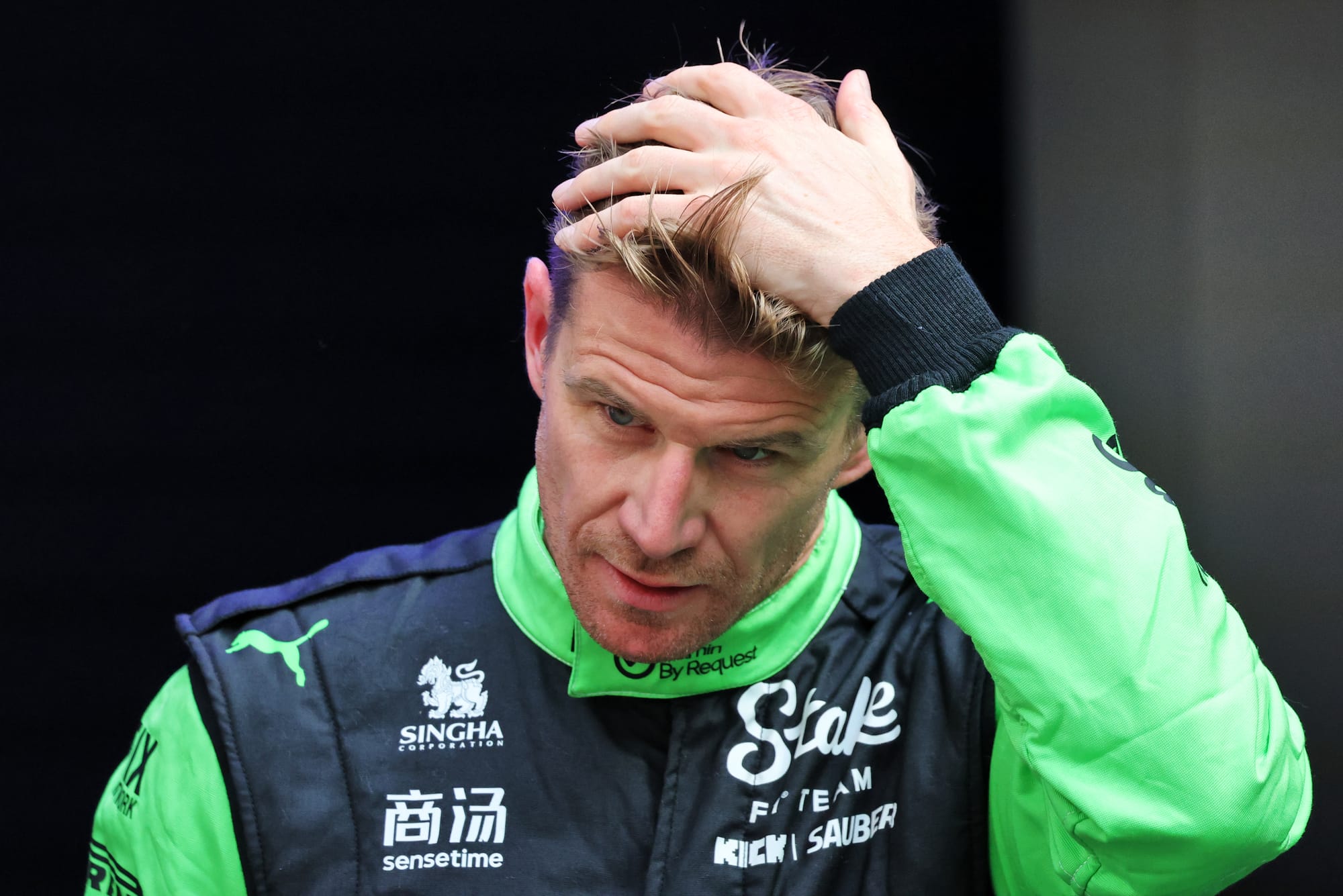
Nico Hulkenberg has a surprisingly poor qualifying record this season and has admitted he is lacking confidence in Sauber’s F1 car.
While Gabriel Bortoleto has made it into Q3 in four of the past seven races, Hulkenberg is yet to start in the top 10 all season.
“It’s true, qualis have been difficult this year,” Hulkenberg said. “And I think it goes back to the car and the car's characteristics. On the limit, I don't quite feel that good with it, that comfortable, I’m missing a bit of confidence.
“And that's obviously difficult, especially now in this year, when the midfield it's so tight, and the difference between making it out of Q1 is usually a few hundredths or a tenth.”
The midfield is very competitive this year and Sauber has developed its car well enough to be a regular points threat. But Hulkenberg is being left with too much work to do to capitalise like Bortoleto has.
That has gradually led to a swing towards Bortoleto in terms of race results as the season has developed.
In fact, in the five races since Hulkenberg scored his first F1 podium at the British GP, he’s failed to finish in the points.
There’s not much in the way of answers yet, with Hulkenberg calling it a “work in progress” and vaguely referring to “confidence and feeling” rather than it being a set-up issue. He also says it has been there all year, not just as the car has evolved.
McLaren driver market twist
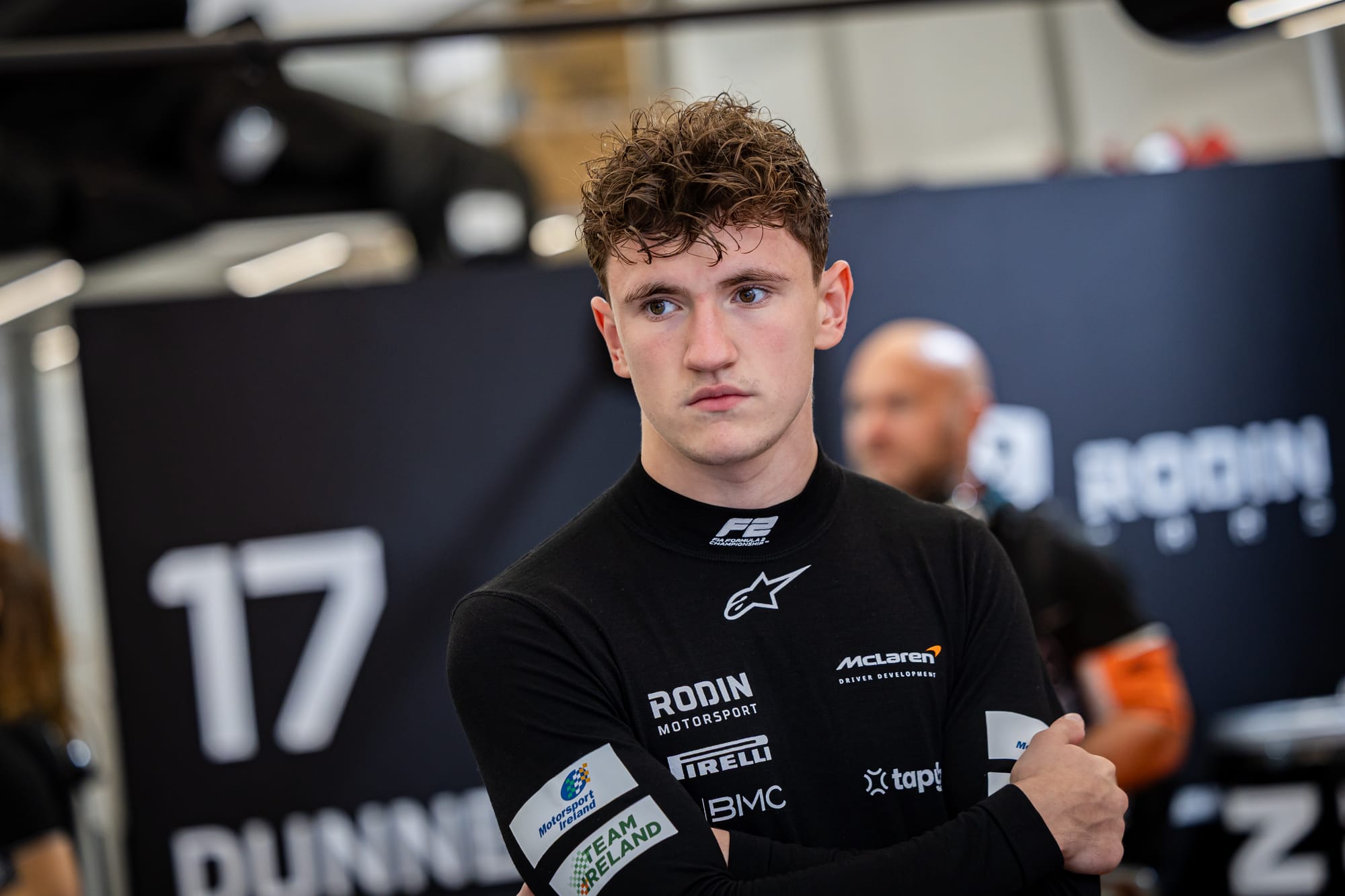
McLaren severing ties with one of the top junior drivers below Formula 1 has added an unexpected twist to the driver market - a market that McLaren’s had no real role in since it moved to replace Daniel Ricciardo with Oscar Piastri during 2022.
The 19-year-old Formula 2 rookie Alex Dunne is a free agent (for now) as The Race understands the opportunities McLaren offered him - with no F1 race seat available until 2028, at the earliest - weren’t enough.
Red Bull would be the logical next destination, with motorsport advisor Helmut Marko previously highly complimentary of Dunne.
Plus, bar Max Verstappen, Red Bull has an uncertain driver line-up across its two cars next year, with Dunne’s F2 rival Arvid Lindblad, Yuki Tsunoda, Liam Lawson and Isack Hadjar all in the mix.
Dunne’s unlikely to join the fight for a ‘26 seat, but joining Red Bull’s programme could potentially put him in the mix for a seat during next year or for 2027.
Different strategy expectations
As part of the efforts by Pirelli and F1 to spice up the strategy show off the back of some straightforward one-stoppers earlier in the year, the idea of lifting the pitlane speed limit at suitable venues got approved by the FIA.
The theory was that by cars going through the pitlane quicker – 80km/h rather than 60km/h – it would reduce the time loss for tyre changes and potentially flip the maths in favour of extra stops.
The Dutch GP was the first venue where this happened but the gain there did not make enough of a difference.
However, the introduction of the 80km/h limit in Singapore could well be a different matter – depending on whose simulation you pay most attention to.
According to Pirelli’s simulations, the 28-second pit loss time at Singapore for a stop has been reduced by around six seconds – and should now be somewhere between 21 and 22 seconds.
This has shifted the maths and marginally made the two-stopper a quicker strategy – albeit from one data set.
That is because Pirelli’s simulation is based on a car running alone on track, while teams use much more complicated systems to replicate what they find in races when they are battling and being influenced by the pace of other cars.
These so-called ‘Monaco simulations’ that include elements like how hard overtaking is, marginally put the one-stop back as the most favourable strategy to go for – because of the risk of getting stuck being slower cars.
That does not sound so great initially, but the fact that things are so close suggests strategy is on a knife-edge to open up some intriguing options to play out on Sunday.
Hamilton’s lost the ‘most important thing in my life’
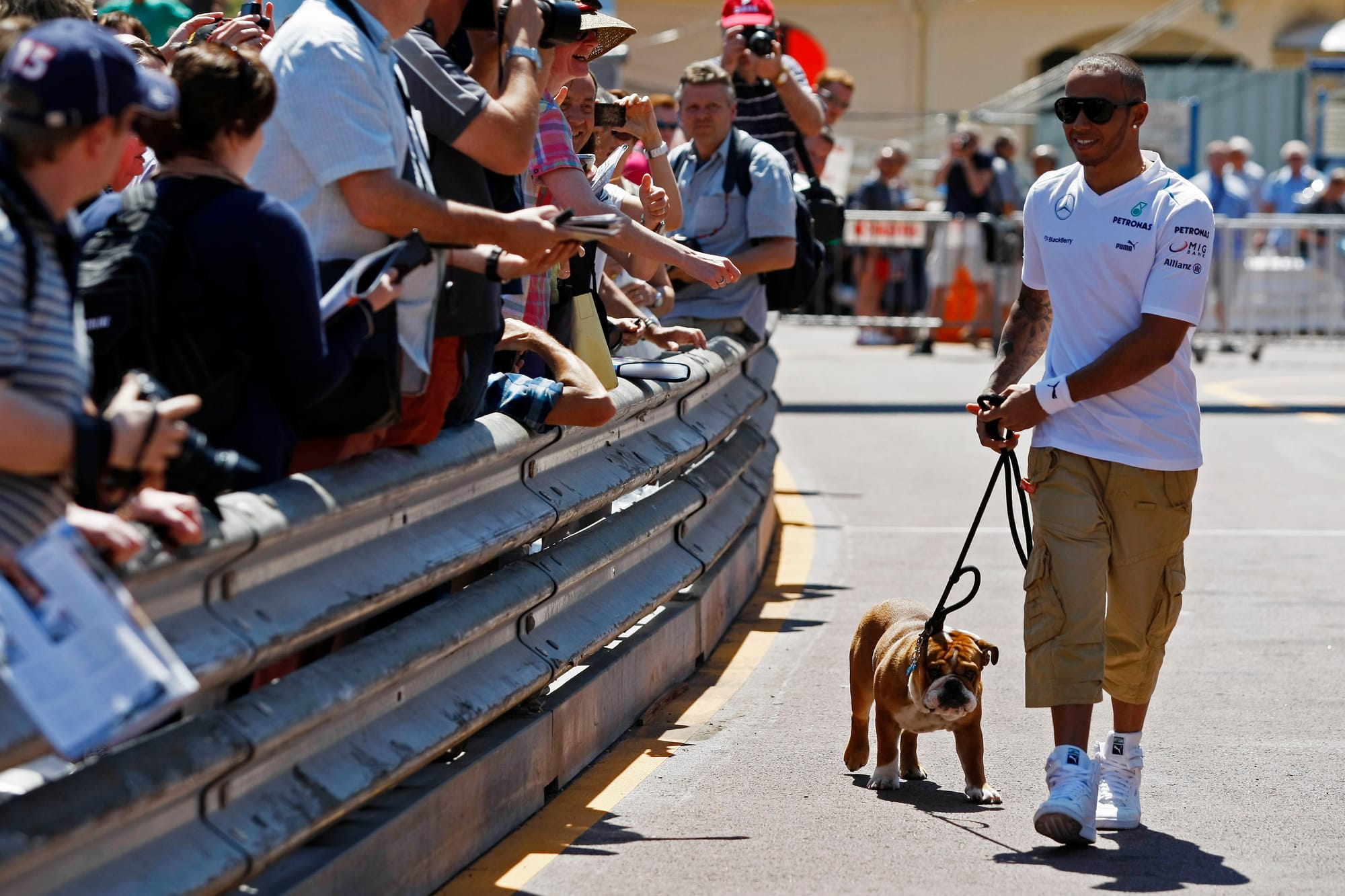
Lewis Hamilton’s dog and long-time companion Roscoe passed away last weekend.
Asked about the response Hamilton has received since sharing the news, he said “Quite overwhelming, to be honest, to see just how many people Roscoe touched around the world.
“And really heartwarming to receive, I've not been able to reply to everybody. But he was the most important thing in my life, so it was a very difficult experience and I know so many people in the world have gone through it and know what it's like to have a pet that gives you such an amazing love and it's an amazing experience.
“I'm really just looking forward to now just getting back in the car and doing what I love doing here.”
Hamilton added: “This past week, I think it's in moments like that where you really see people show up for you, and that's been, as I said, really overwhelming to see and really welcomed.”


